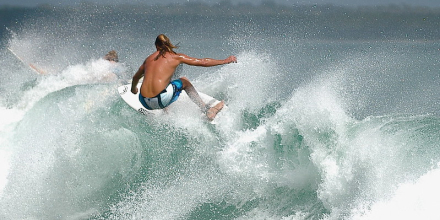Surfing economics: quantifying the value of recreational surfing at the Noosa World Surfing Reserve

Event details
ACDE Seminar
Date & time
Venue
Speaker
Contacts
Over 50 million people across the world practice surfing on a regular basis. In Australia, surfing is the second most practiced ocean-based activity, only after swimming, and before fishing, scuba diving and snorkelling. While the contribution of surfing to the market economy is increasingly recognised, only a handful of international studies have quantified non-market values associated with recreational surfing. In this paper, we present the first Australian study specifically dedicated to understanding the market and non-market values of recreational surfing. Our application of the travel cost method in the Noosa World Surfing Reserve (Queensland) reveals consumer surplus of A$50 per person per trip, equal to A$13 million a year, based on 265,400 annual surf trips. Direct expenditure in surf-related gear and travel averaged A$3,350 per person per year, i.e. over A$197 million/year when accounting for 58,700 surfers across the Noosa area. This study demonstrates the importance of recreational surfing for its market and non-market values, which have been, so far, widely overlooked by the economics literature on coastal recreation. With surf breaks being at risk from climatic and anthropogenic factors, quantification of surfing values could help inform coastal polices and legislation aimed at the preservation of valuable environmental assets. Thus, we call for greater attention from researchers and policy-makers into the economic valuation and sustainable management of surfing resources, on both modified and natural coasts.
Updated: 18 April 2024/Responsible Officer: Crawford Engagement/Page Contact: CAP Web Team











